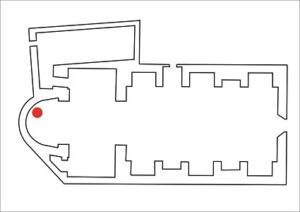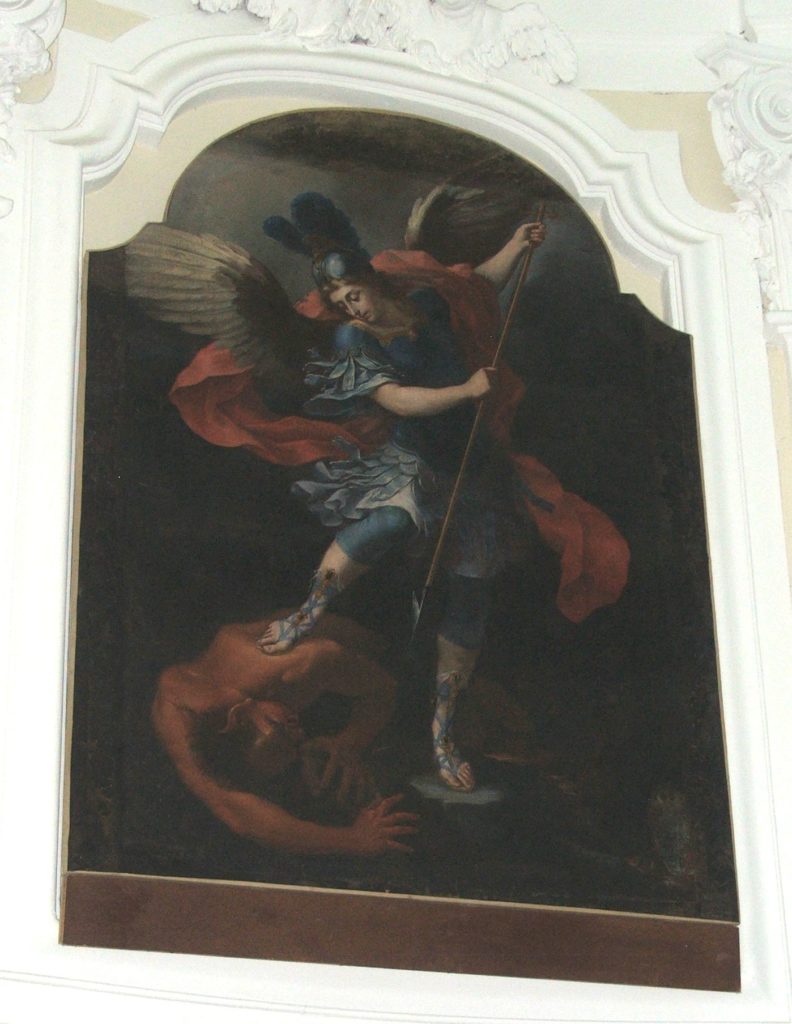San Michele Arcangelo


Chiesa di S. Maria Maggiore
Dipinto
San Michele Arcangelo
Sec. XVII
Olio su tela
Ambito culturale campano

Church of S. Maria Maggiore
Painting
Archangel Michael
17th century
Oil painting on canvas
Campania cultural area
Il dipinto è parte della serie di otto tele scomparse dalla chiesa negli anni ’40 del XX secolo e riportata a Grottaminarda nel gennaio 1994.
E’ probabile che l’opera per il suo tema iconografico, San Michele arcangelo che sconfigge il demonio, fosse parte del patrimonio dell’omonima chiesa sino all’ultimo quarto del XVII secolo.
Dopo il terremoto del 1732, l’opera venne trasferita nella Chiesa di S. Maria Maggiore. Durante i primi decenni del Novecento, insieme a “S. Teresa” e a “Sant’Antonio di Padova”, era conservata in una delle cappelle laterali della navata. In seguito ai restauri, voluti dall’arciprete Alfonso Maria Cogliani, le opere vennero trasferite prima nella casa canonica e poi in sacrestia.
Non si hanno notizie documentate sulla committenza, tuttavia l’opera in basso a destra, riporta lo stemma combinato della famiglia Coscia e Visconti, sui cui è poggiato un cappello prelatizio. Probabilmente, potrebbe essere un figlio di Raffaele Coscia e di Paola Visconti che intraprese la carriera ecclesiastica.
Con buona probabilità questo ecclesiastico commissionò il restauro di questa tela e la realizzazione delle altre due tele citate.
The painting is part of the series of eight paintings that disappeared from the church in the 1940s and brought back to Grottaminarda in January 1994.
It is probable that the work for its iconographic theme, St. Michael the Archangel defeating the devil, was part of the patrimony of the homonymous church until the last quarter of the seventeenth century.
After the 1732 earthquake, the work was transferred to the Church of S. Maria Maggiore. During the first decades of the twentieth century, together with “S. Teresa “and”Sant’Antonio di Padova “, it was kept in one of the side chapels of the nave. Following the restoration, commissioned by the archpriest Alfonso Maria Cogliani, the works were transferred first to the canonical house and then to the sacristy.
There is no documented information on the client, however the work at the bottom right, shows the combined coat of arms of the Coscia and Visconti family, on which a prelatic hat rests. Probably, he could be a son of Raffaele Coscia and Paola Visconti who undertook an ecclesiastical career.
In all likelihood, this clergyman commissioned the restoration of this canvas and the realization of the other two canvases mentioned.

